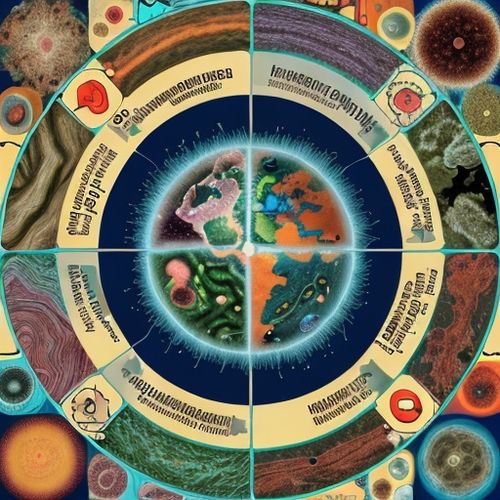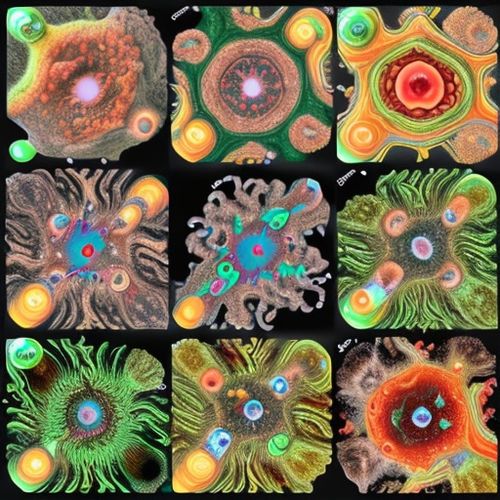The scientific community has been abuzz with new data emerging about the off-target effects of CRISPR-Cas12a, a gene-editing tool once hailed for its precision. Recent studies have cast doubt on earlier assumptions, revealing unexpected patterns of unintended DNA modifications that could have far-reaching implications for therapeutic applications. These findings come at a critical juncture as clinical trials using CRISPR technologies are gaining momentum worldwide.
What makes these new findings particularly striking is the methodology employed by research teams. Unlike previous assessments that relied heavily on computational predictions, the latest investigations utilized advanced sequencing techniques capable of detecting off-target events at single-nucleotide resolution. This approach uncovered a higher-than-anticipated frequency of collateral damage in genomic regions with only partial homology to the target sequence. The data suggests that Cas12a's much-touted specificity advantage over Cas9 might not be as pronounced as previously believed.
The implications extend beyond basic research. Pharmaceutical companies developing CRISPR-based therapies are now reassessing their pipelines, with several firms delaying IND submissions pending further validation studies. This cautious approach reflects growing recognition that even rare off-target events could prove problematic when editing millions of cells in human patients. The new data particularly impacts ex vivo therapies where edited cells undergo extensive proliferation before reinfusion.
Interestingly, the off-target profile appears highly dependent on cellular context. Research teams observed significant variations between cell types, with pluripotent stem cells showing markedly different patterns compared to differentiated cells. This cellular dependence complicates the establishment of universal safety guidelines and suggests that off-target assessments may need to be performed separately for each therapeutic application. The findings also highlight potential limitations of using simplified model systems for safety evaluations.
Several groups are now exploring modified versions of Cas12a that could retain its beneficial characteristics while minimizing unintended edits. Early results from protein engineering efforts show promise, with some variants demonstrating reduced off-target activity in preliminary tests. However, these modified enzymes often come with trade-offs, such as decreased on-target efficiency or increased size that complicates delivery. The balancing act between specificity and functionality continues to challenge researchers.
The new data has reignited debates about regulatory standards for CRISPR therapies. Some experts argue that current detection methods remain insufficiently sensitive to capture all potential off-target effects, while others contend that the focus should shift toward demonstrating clinical safety rather than achieving theoretical perfection in specificity. This philosophical divide is likely to shape guideline development as regulatory agencies worldwide grapple with these emerging complexities.
From a technical standpoint, the findings underscore the importance of developing better predictive algorithms. Existing tools for identifying potential off-target sites were primarily trained on Cas9 data and appear less accurate for Cas12a. Machine learning approaches incorporating the new experimental data may yield improved prediction models, though this will require large-scale validation across diverse genomic contexts. Several consortia have already begun pooling resources to address this need.
The therapeutic implications are particularly acute for diseases requiring precise edits in critical genes. In hemoglobinopathies, for instance, even low-frequency off-target events in hematopoietic stem cells could theoretically lead to clonal expansion or malignant transformation over decades. While no such events have been observed in clinical trials to date, the new data suggests they may have been previously undetectable rather than absent. This realization is prompting more conservative approaches to patient monitoring in ongoing studies.
Surprisingly, the off-target effects don't appear entirely random. Analysis of the new datasets reveals certain genomic features that correlate with increased susceptibility to unintended editing. Regions with specific chromatin states or particular sequence motifs show higher off-target rates, suggesting that cellular DNA repair mechanisms interact with Cas12a in previously unrecognized ways. This insight could lead to better strategies for avoiding problematic genomic regions when designing guide RNAs.
The basic science community is also reevaluating long-held assumptions about Cas12a's mechanism of action. The enzyme's reported ability to make staggered cuts was thought to contribute to its precision, but new evidence suggests this characteristic might actually facilitate certain types of off-target events under specific conditions. These mechanistic insights could prove invaluable for engineering next-generation CRISPR systems with improved fidelity.
As the field digests these findings, one thing becomes clear: the journey toward safe, reliable genome editing remains more complex than initially envisioned. While the new data doesn't negate CRISPR's transformative potential, it underscores the need for continued rigorous evaluation as these powerful tools move toward widespread clinical use. The coming years will likely see intensive efforts to characterize, minimize, and monitor off-target effects across the growing array of CRISPR variants and applications.

By Thomas Roberts/Apr 19, 2025

By Michael Brown/Apr 19, 2025

By Victoria Gonzalez/Apr 19, 2025

By Benjamin Evans/Apr 19, 2025

By Eric Ward/Apr 19, 2025

By Emily Johnson/Apr 19, 2025

By David Anderson/Apr 19, 2025

By Olivia Reed/Apr 19, 2025

By Emma Thompson/Apr 19, 2025

By William Miller/Apr 19, 2025

By Laura Wilson/Apr 19, 2025

By Emma Thompson/Apr 19, 2025

By John Smith/Apr 19, 2025

By John Smith/Apr 19, 2025

By James Moore/Apr 19, 2025

By Michael Brown/Apr 19, 2025

By John Smith/Apr 19, 2025

By Noah Bell/Apr 19, 2025

By Emma Thompson/Apr 19, 2025

By Benjamin Evans/Apr 19, 2025